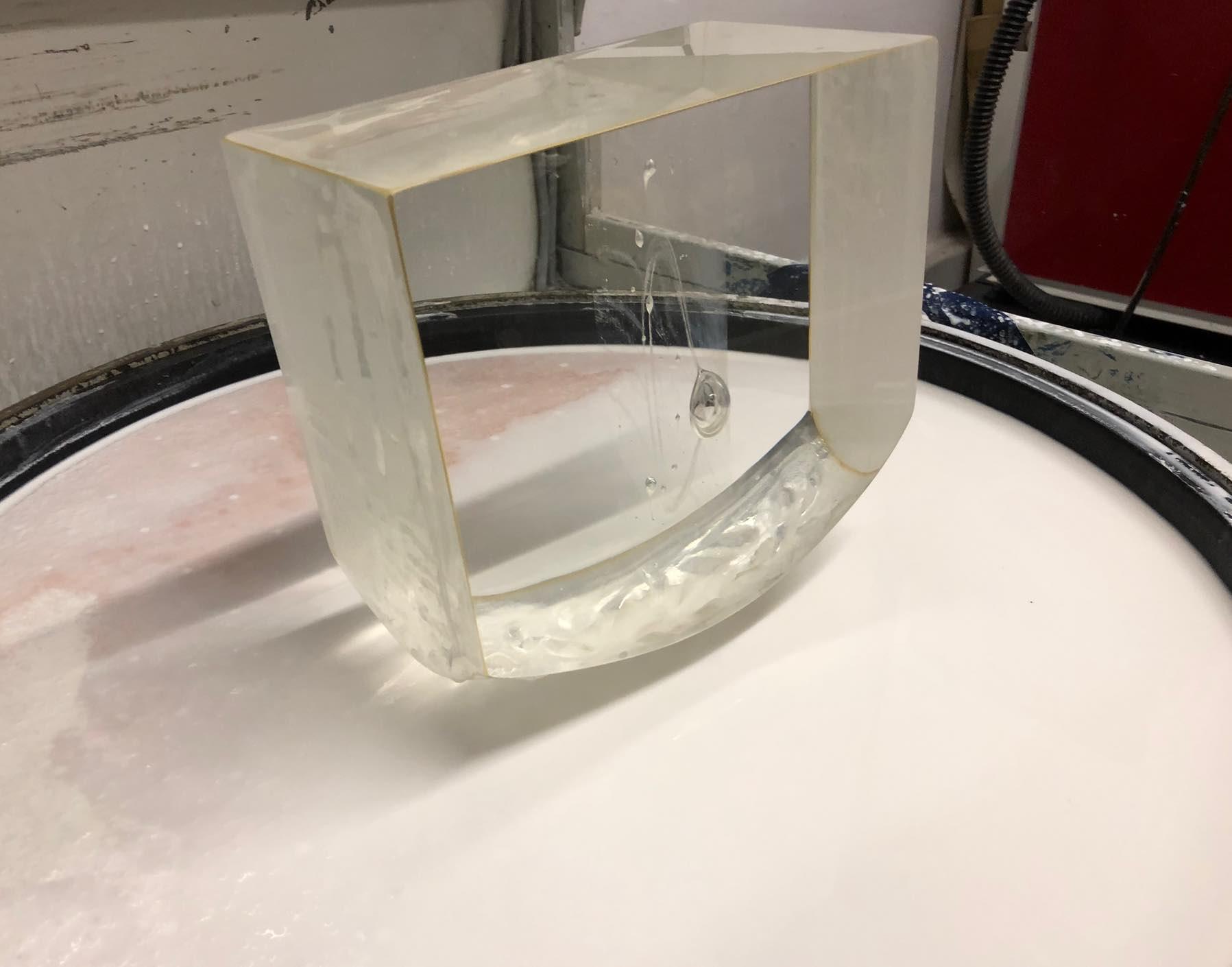Glass casting process
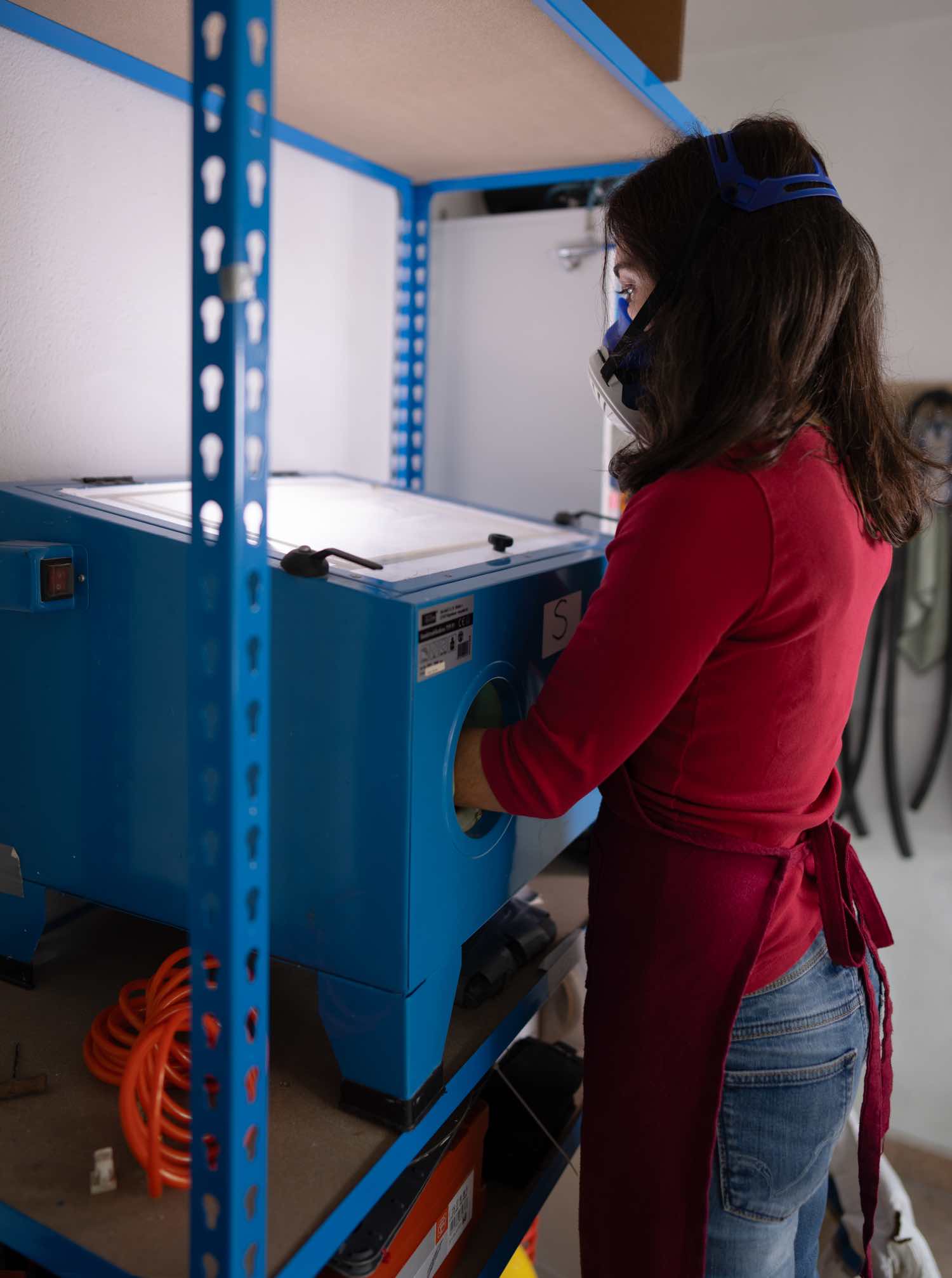
Glass casting is the process of melting glass into a mold where it solidifies to create a sculpture. The casting technique I use to create my sculptures allows for intricate internal details and optical precision (here you can read about the 7 steps I follow to cast my glass sculptures).
Kiln casting enables the creation of intricate shapes inside the glass, which are a result of melting glass into one single pure piece.
Each optical glass sculpture is a unique creation that takes months to complete and involves several stages and techniques.
The kiln-casting method
From idea conception to mold making, pieces are fired in a kiln at 850 degrees Celsius for over two weeks, following a 14-stage temperature monitoring system to ensure uniform cooling. Optical glass requires very slow temperature cooling rates to ensure proper annealing and avoid thermal stress.
Once the firing process is complete, pieces undergo multiple polishing stages to achieve optical transparency. This final stage is one of the most time-consuming steps, as each sculpture requires weeks of grinding and polishing to obtain optical transparency.
Sculptures are created using crystal clear, eco-optical glass by OHARA, a lead- and arsenic-free glass known for its purity and light transmission properties.
The process in pictures
Making the prototype
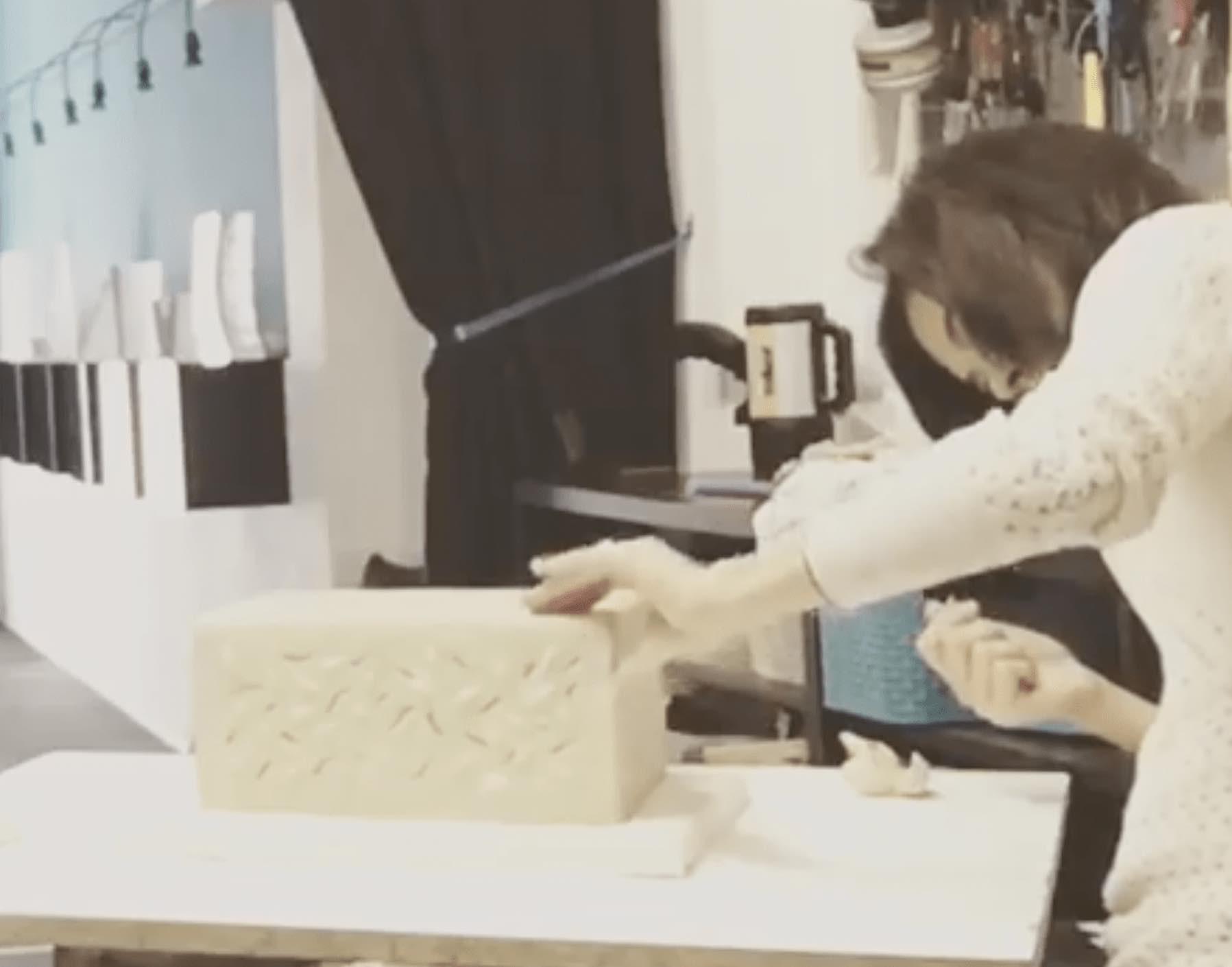
Preparing the plaster mix

Building the walls to pour the plaster mix

Optical glass blocks prior to melting in the kiln
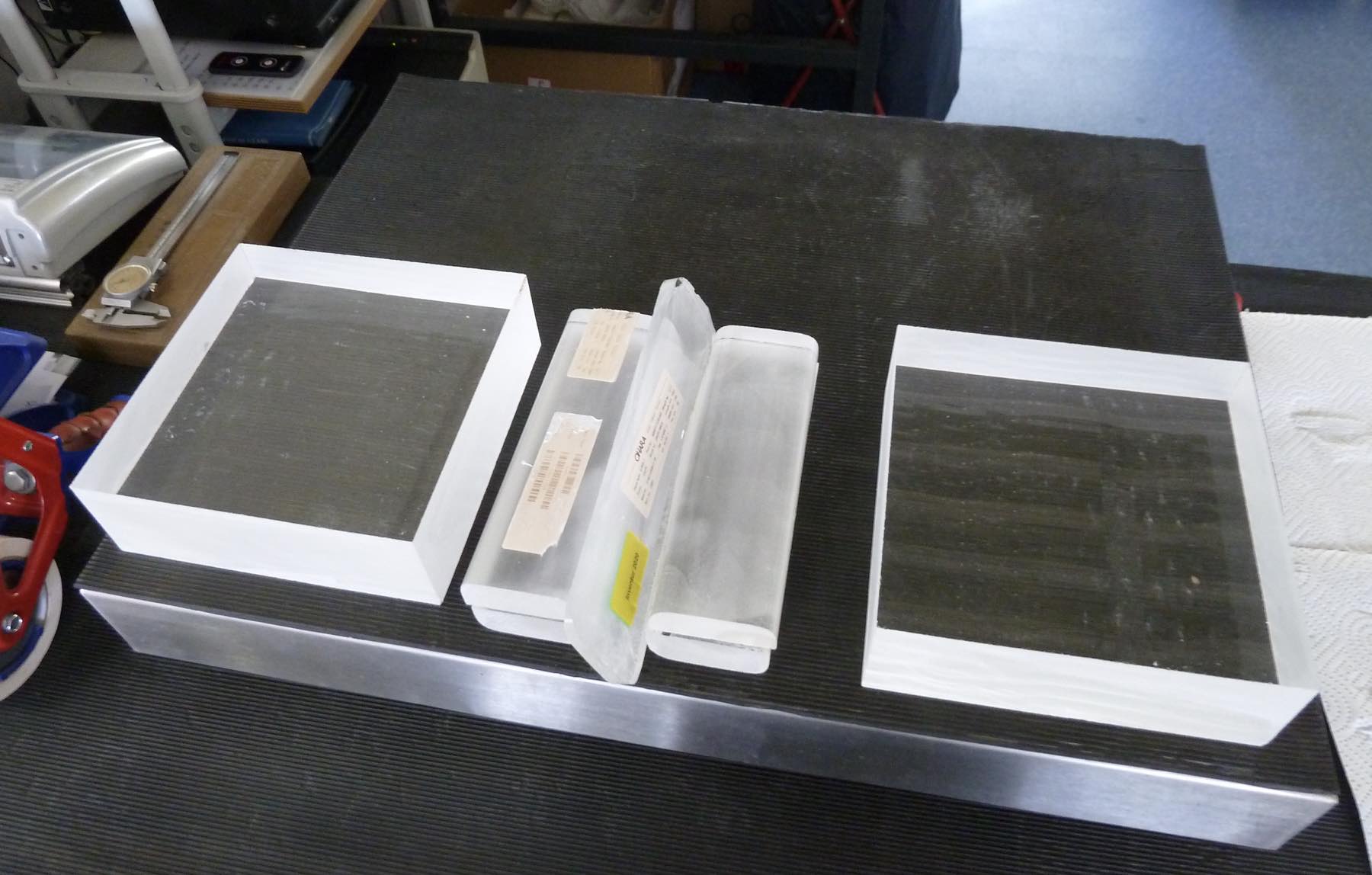
Mold ready to be fired in the kiln
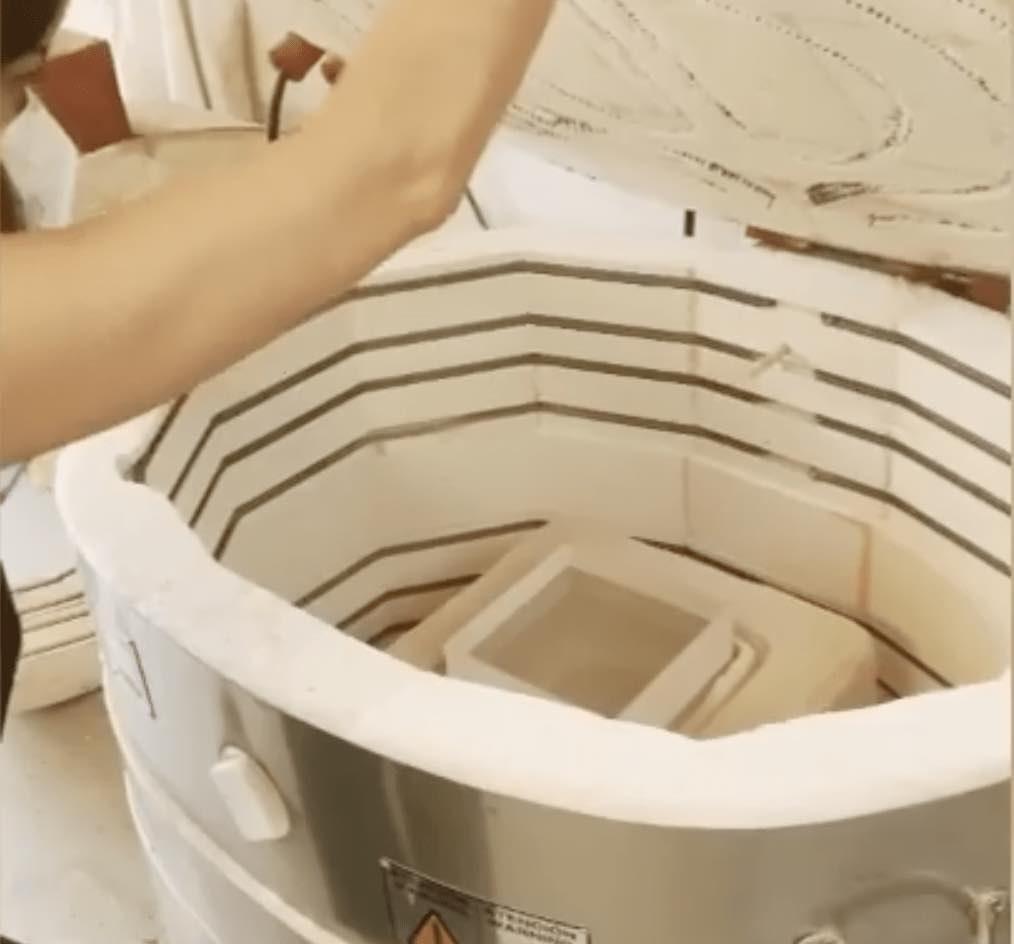
Sculpture after firing and prior to polishing
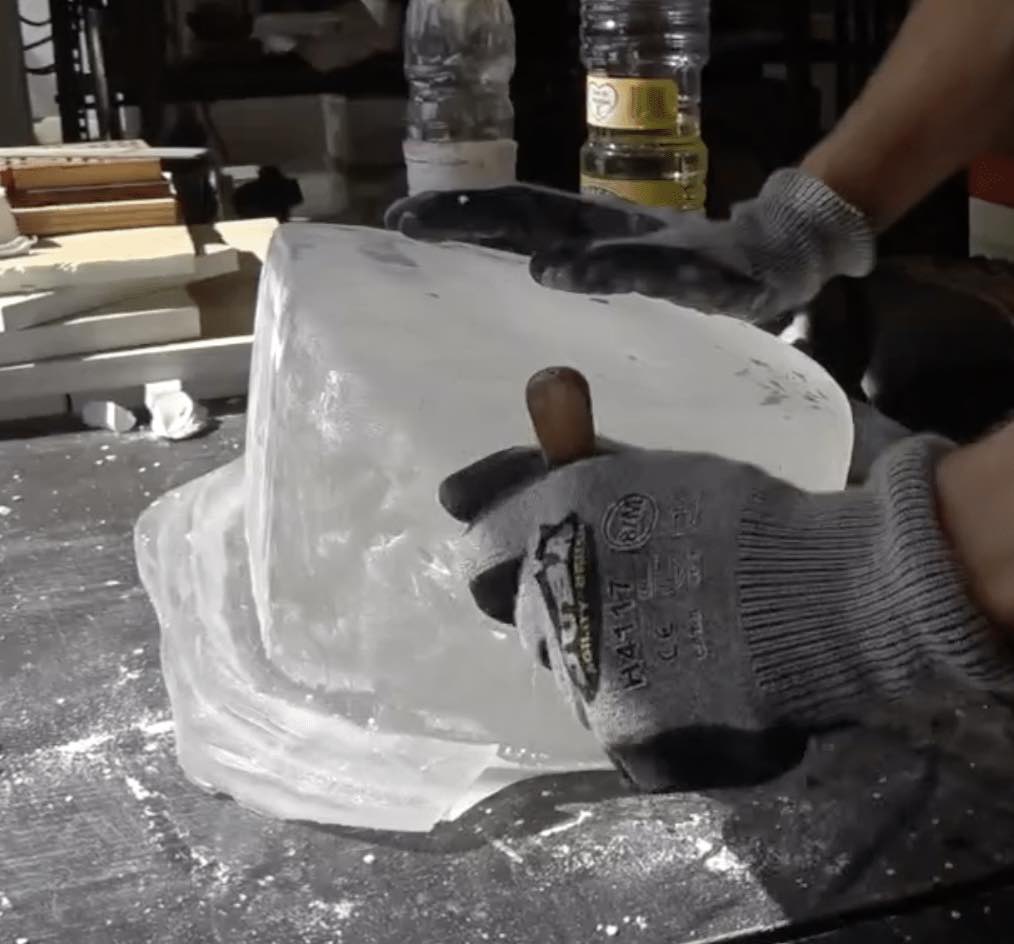
Grinding a glass sculpture with silicon carbide

Polishing a glass sculpture with cerium oxide
